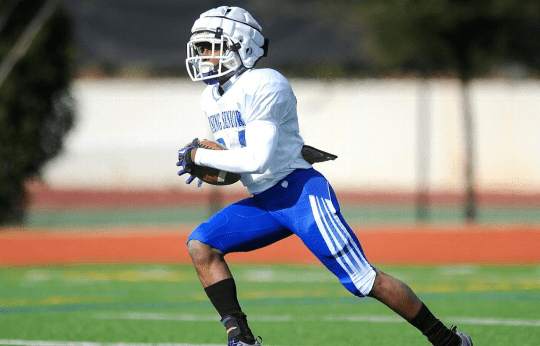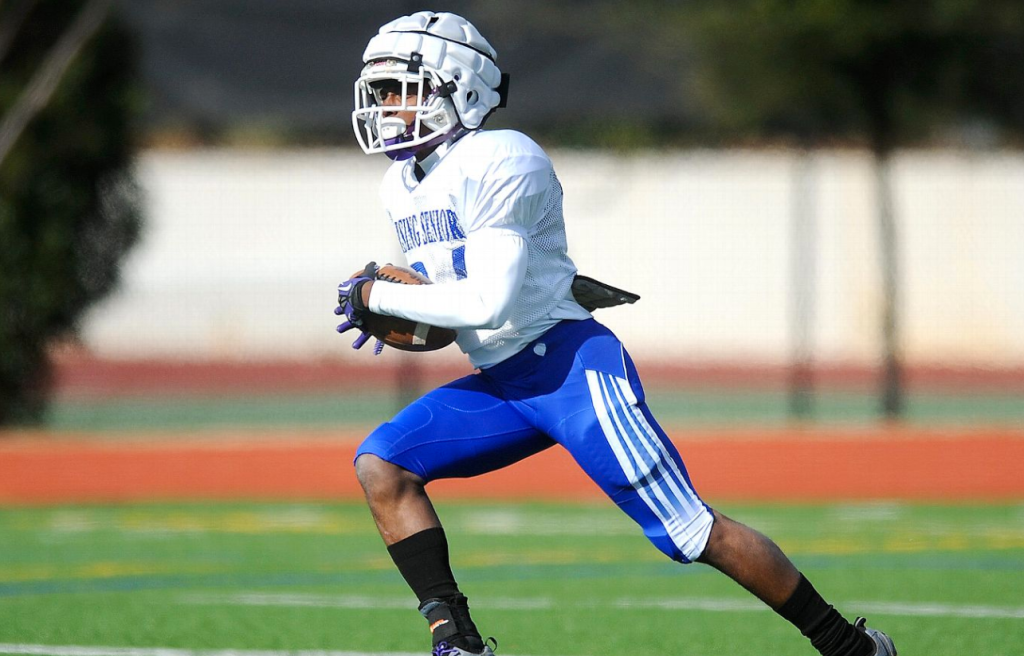
Chuck Petersen describes himself as an “old school’’ football guy.
He played and coached at the Air Force Academy, and now he coaches at Orange Lutheran High School in California.
A parent last year suggested Peterson’s team members wear a new type of soft padded covering for their helmets during practice, to cut down on the intensity of football hits.
The Guardian Cap has a Georgia connection. It’s designed by an Alpharetta company run by Georgia Tech grad Lee Hanson and his wife, Erin.
“At first I was a little skeptical,” Petersen recalls. But after a year of having the team use the helmet caps, made of thermoplastic material, the coach reports that only one player was lost to a head-related injury in practice during the whole 2012 season.
“I think eventually they’ll be used in games,’’ Petersen says.
The Hanson Group, a privately held company, has developed a range of protective products, from transparent armor for U.S. military vehicles to liner material for mining.
The Guardian Cap, which is snapped onto the regular helmet, is aimed at decreasing the force of impact on players’ heads.
“This was a passion product, to help these kids play these sports,’’ Erin Hanson says. She is quick to say that the helmet caps are not marketed as a means of concussion prevention, but as a way to reduce the impact of collisions.
Laws and lawsuits
[youtube]http://www.youtube.com/watch?v=JGnpFDPPNz8[/youtube]Concussions in football and other sports have attracted much greater public attention in recent years. Just this week, Georgia Gov. Nathan Deal signed legislation that would require medical clearance before a school athlete returns to competition after a concussion.
Retired pro football players, meanwhile, have reported having serious neurological issues, and hundreds of them are suing the NFL over concussion-related health problems.
According to Bloomberg News, the litigation focuses attention on helmets made by Riddell – the league’s official helmet maker – and whether the NFL covered up the sport’s long-term damage to players’ brains.
Riddell, in a statement to Bloomberg, said, “Riddell’s primary mission has always been, and continues to be, providing the best protective football headgear to the athlete.’’
The NFL has denied the lawsuit claims, but has also tightened rules against helmet-to-helmet hits by players, as well as instituting a league-wide sideline testing protocol for concussions.
In March, the league passed a rules change banning players from delivering forceful blows with the crown of the helmet.
Protective coverings for helmets have been used before by NFL players. Mark Kelso, a former safety for the Buffalo Bills, wore a “ProCap’’ for five years. His last game was the Super Bowl in Atlanta in 1993.
Kelso, who had a history of concussions, says the Bills training staff gave him an ultimatum in 1989: Wear a protective padded cap on his helmet, or he wouldn’t be cleared to play.
He took ribbing from fellow players, who called him “Bubblehead.’’ Even his wife laughed when she first saw the cap. Jim Kelly, the Bills quarterback at the time, “said it looked ridiculous,’’ Kelso says.
He played in an era, he says, when “it was a badge of honor’’ to “see stars’’ after a collision.
But in the years he wore it, Kelso says, he had only one concussion.
Kelso, who owns stock in ProCap and has done marketing for the Guardian Cap, says, “I’m an advocate for anything that has a resilient surface.’’ More concussions occur in practice than in games, he says.
“Helmet companies have made reasonable progress, albeit slow progress,’’ Kelso says. “They’ve moved too slowly. We need to continue to push the envelope.’’
An idea that is catching on

The Hanson Group has been tinkering with helmet design for the past four years. They gave away hundreds of the caps to youth football programs.
Last year sales began to take off. The couple says 8,000 players wore the caps in 2012.
The University of South Carolina tested the Guardian Caps during the Gamecocks’ spring practice this year, the Hansons say.
The caps retail for $55 each.
“We want to protect these youths,’’ Lee Hanson says. “You can make football safer.”
Steve Stepp, the head athletic trainer at Wesleyan School, in Norcross, is sold on the concept.
Stepp says the school required the Guardian Caps in practice for football players from 7th grade through 12th at the suburban Atlanta private school.
“The Guardian cap has been very effective at our school,’’ Stepp says.
The caps are lightweight and don’t retain warmth, making them comfortable for players to use, he says.
While some people have liability concerns, Stepp says, “parents see us as being proactive.’’
He says he’s encouraging other schools to use them. And he, like Peterson, predicts they will eventually be used in games, and not just practice.
“There will come a day when you see football teams playing with them on Friday nights,’’ Stepp says.

